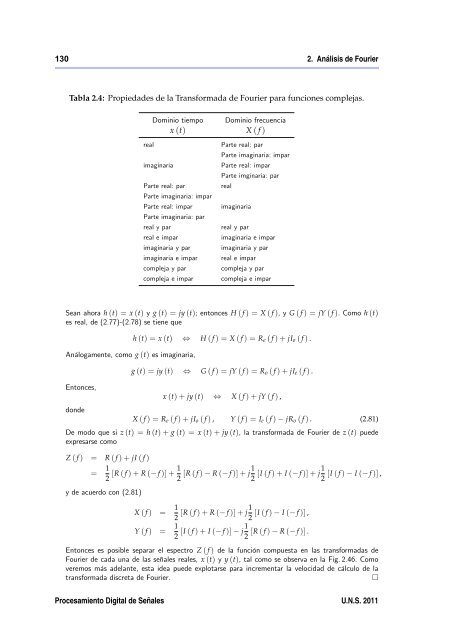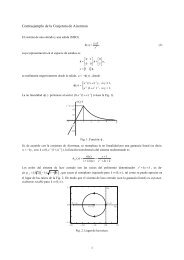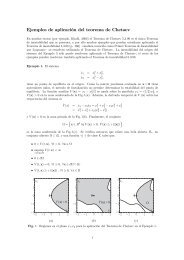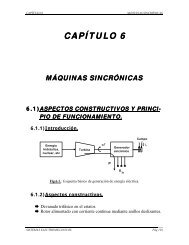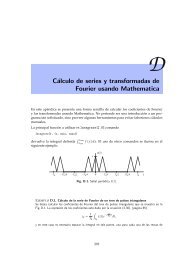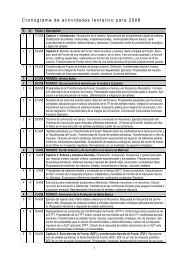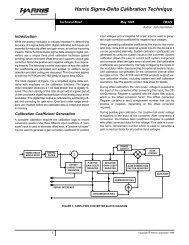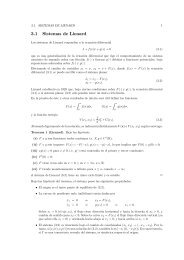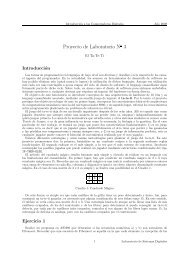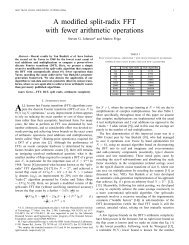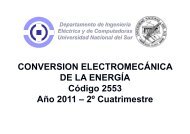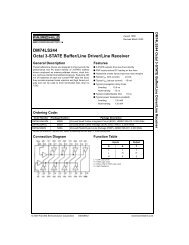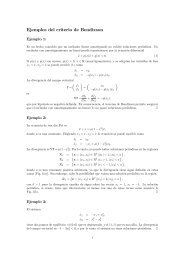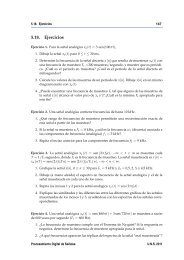Transformada de Fourier
Transformada de Fourier
Transformada de Fourier
- No tags were found...
You also want an ePaper? Increase the reach of your titles
YUMPU automatically turns print PDFs into web optimized ePapers that Google loves.
130 2. Análisis <strong>de</strong> <strong>Fourier</strong>Tabla 2.4: Propieda<strong>de</strong>s <strong>de</strong> la <strong>Transformada</strong> <strong>de</strong> <strong>Fourier</strong> para funciones complejas.Dominio tiempo Dominio frecuenciax (t) X ( f )realimaginariaParte real: parParte imaginaria: imparParte real: imparParte imaginaria: parreal y parreal e imparimaginaria y parimaginaria e imparcompleja y parcompleja e imparParte real: parParte imaginaria: imparParte real: imparParte imginaria: parrealimaginariareal y parimaginaria e imparimaginaria y parreal e imparcompleja y parcompleja e imparSean ahora h (t) = x (t) y g (t) = jy (t); entonces H ( f ) = X ( f ), y G ( f ) = jY ( f ). Como h (t)es real, <strong>de</strong> (2.77)-(2.78) se tiene queAnálogamente, como g (t) es imaginaria,Entonces,don<strong>de</strong>h (t) = x (t) ⇔ H ( f ) = X ( f ) = R e ( f ) + jI o ( f ) .g (t) = jy (t) ⇔ G ( f ) = jY ( f ) = R o ( f ) + jI e ( f ) .x (t) + jy (t) ⇔ X ( f ) + jY ( f ) ,X ( f ) = R e ( f ) + jI o ( f ) , Y ( f ) = I e ( f ) − jR o ( f ) . (2.81)De modo que si z (t) = h (t) + g (t) = x (t) + jy (t), la transformada <strong>de</strong> <strong>Fourier</strong> <strong>de</strong> z (t) pue<strong>de</strong>expresarse comoZ ( f ) = R ( f ) + jI ( f )= 1 2 [R ( f ) + R (− f )] + 1 2 [R ( f ) − R (− f )] + j 1 2 [I ( f ) + I (− f )] + j 1 [I ( f ) − I (− f )] ,2y <strong>de</strong> acuerdo con (2.81)X ( f ) = 1 2 [R ( f ) + R (− f )] + j 1 [I ( f ) − I (− f )] ,2Y ( f ) = 1 2 [I ( f ) + I (− f )] − j 1 [R ( f ) − R (− f )] .2Entonces es posible separar el espectro Z ( f ) <strong>de</strong> la función compuesta en las transformadas <strong>de</strong><strong>Fourier</strong> <strong>de</strong> cada una <strong>de</strong> las señales reales, x (t) y y (t), tal como se observa en la Fig. 2.46. Comoveremos más a<strong>de</strong>lante, esta i<strong>de</strong>a pue<strong>de</strong> explotarse para incrementar la velocidad <strong>de</strong> cálculo <strong>de</strong> latransformada discreta <strong>de</strong> <strong>Fourier</strong>.Procesamiento Digital <strong>de</strong> Señales U.N.S. 2011


